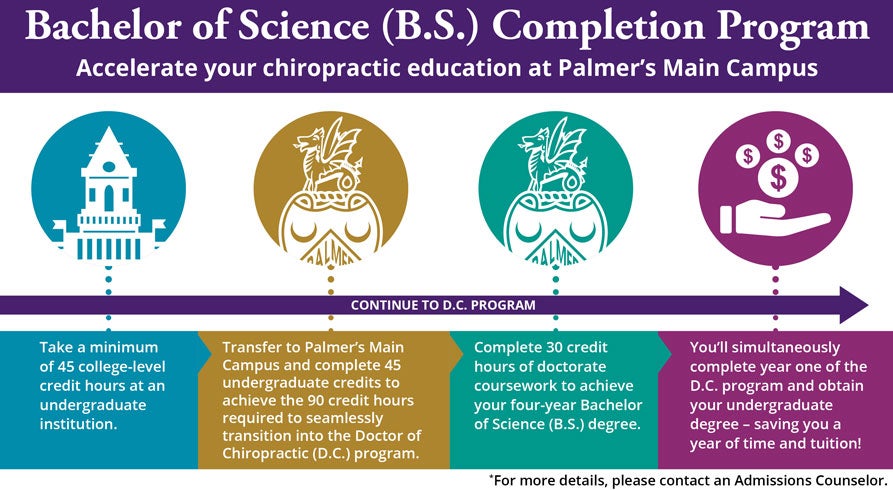
How many credits is a bachelor’s degree? This question is often on the minds of prospective college students and those considering a degree upgrade. Understanding the credit system is crucial for navigating the path to a bachelor’s degree, as it dictates the number of courses you’ll need to take and the time it takes to graduate.
In the United States, a bachelor’s degree typically requires a minimum of 120 semester credits. However, this number can vary depending on the specific institution, field of study, and whether you transfer credits or receive credit for prior learning experiences. This article delves into the intricacies of credit requirements, shedding light on the different factors that can influence the total number of credits you need to earn.
The Concept of Credits
Credits are the units used to measure the amount of academic work completed by students in higher education. They represent the time, effort, and learning outcomes associated with a particular course or program.
Course Credits and Their Values
The number of credits assigned to a course reflects its workload and academic value. For instance, a typical undergraduate course might be worth 3 credits, while a more intensive seminar or lab course could be worth 4 or even 5 credits. These credit values are based on factors such as:
- Course Length: The duration of the course, typically measured in weeks or hours of instruction.
- Weekly Time Commitment: The expected amount of time students are expected to dedicate to the course, including lectures, readings, assignments, and exams.
- Course Difficulty: The level of complexity and rigor involved in the course, which may vary based on the subject matter and the level of study.
Credits Earned and Graduation Requirements
Credits earned for successfully completing courses accumulate towards a student’s overall degree requirements. Each degree program has a specific number of credits that must be earned for graduation. For example, a typical bachelor’s degree program might require 120 credits, while an associate degree program might require 60 credits.
The total number of credits required for graduation can vary depending on the specific program of study, the institution, and the state or country.
Bachelor’s Degree Requirements

A bachelor’s degree is a standard four-year undergraduate degree that signifies the completion of a specific field of study. It is a prerequisite for many advanced degrees and professional careers. To earn a bachelor’s degree, students must fulfill specific requirements, including a certain number of credit hours.
Standard Credit Requirements
The standard credit requirement for a bachelor’s degree in the United States is 120 credit hours. This number can vary slightly depending on the institution and the specific program of study. However, 120 credit hours is a common benchmark across most universities and colleges.
Credit Requirements Across Different Fields of Study
Credit requirements can differ depending on the chosen field of study. For example, STEM (Science, Technology, Engineering, and Mathematics) majors often require more credit hours than humanities majors. This is because STEM fields typically involve more specialized coursework and laboratory experiences.
For instance, a computer science major might need to take more advanced mathematics courses and programming courses, which could require additional credit hours compared to a history major.
Variations in Credit Requirements Across Institutions
Credit requirements can also vary across different institutions. Some universities might have stricter credit requirements than others, while some might offer accelerated programs that allow students to graduate with fewer credit hours.
For example, a university known for its rigorous academic standards might require 128 credit hours for a bachelor’s degree, while a university with a more flexible curriculum might only require 120 credit hours.
Credit Distribution and Course Load

A bachelor’s degree typically requires a specific number of credits, which are earned by completing courses. To graduate, students must accumulate the required number of credits while maintaining a certain GPA. However, the distribution of these credits across different subjects is equally important. This section explores how credits are distributed and the typical course load for full-time students.
Course Load Distribution
A typical course load for a full-time student pursuing a bachelor’s degree is 12-18 credits per semester. This course load is often divided across different subject areas, such as core courses, elective courses, and major-specific courses.
| Subject Area | Typical Credit Distribution |
|---|---|
| Core Courses | 3-6 credits |
| Elective Courses | 3-6 credits |
| Major-Specific Courses | 6-9 credits |
For example, a student majoring in computer science might take 3 credits of a core course like “Introduction to Sociology,” 3 credits of an elective course like “Art History,” and 6 credits of major-specific courses like “Data Structures and Algorithms” and “Object-Oriented Programming.”
Course Load Balancing
Students often balance their course load across different semesters to achieve their degree goals. For example, a student might take a heavier course load in their junior year when they are taking more major-specific courses. In their senior year, they might take a lighter course load to focus on their capstone project or internship.
It is important to note that the specific course load and credit distribution can vary depending on the university and the student’s major.
Transfer Credits and Prior Learning

Transferring credits and recognizing prior learning can significantly impact your journey toward a bachelor’s degree. These options allow you to leverage previous academic work or real-world experience to potentially shorten your degree program and save time and money.
Transferring Credits from Other Institutions
Transferring credits from other institutions involves the process of having your previous coursework evaluated to determine if it meets the requirements of your current program. This process typically involves the following steps:
- Requesting Transcripts: You’ll need to request official transcripts from all the institutions where you’ve previously taken courses. These transcripts should include a detailed breakdown of your coursework, grades, and credit hours.
- Submitting Transcripts: The transcripts should be sent directly to the admissions office of the institution where you’re applying. You may need to submit them online, by mail, or in person.
- Credit Evaluation: The admissions office will evaluate your transcripts to determine which courses are transferable. This evaluation will consider factors such as the course content, level, and the institution’s accreditation status.
- Credit Transfer: Once your credits are evaluated, the institution will determine the number of transfer credits you’re eligible to receive. This information will be reflected on your academic record.
The transferability of credits can vary based on several factors, including:
- Course Content: The course content must align with the corresponding courses in your current program.
- Course Level: Transfer credits are typically accepted from courses at the same or a higher level than those required in your current program.
- Institution Accreditation: Credits are more likely to be transferred from accredited institutions.
- Transfer Agreement: Some institutions may have transfer agreements with other colleges or universities, making the transfer process more streamlined.
Evaluating Prior Learning
Prior learning refers to any knowledge, skills, or experience gained outside of traditional academic settings. It can include:
- Work Experience: Relevant work experience can be evaluated for college credit, demonstrating your practical knowledge and skills.
- Certifications: Professional certifications can also be used to earn college credit, as they often demonstrate specialized skills and knowledge.
- Military Training: Military training and experience can be evaluated for college credit, recognizing the valuable skills and knowledge gained through military service.
- Independent Study: Courses taken independently or through online learning platforms can also be evaluated for college credit.
The process of evaluating prior learning typically involves:
- Documentation: You’ll need to provide documentation that verifies your prior learning experiences. This may include job descriptions, training certificates, military records, or transcripts from independent study courses.
- Portfolio Development: You may be asked to create a portfolio that demonstrates your skills and knowledge related to the prior learning experience.
- Evaluation: The institution will evaluate your documentation and portfolio to determine the appropriate amount of credit to award.
Impact of Transfer Credits and Prior Learning
Transfer credits and prior learning can have a significant impact on the total credit requirement for a bachelor’s degree. They can potentially:
- Reduce the Number of Courses Required: Transfer credits and prior learning can allow you to skip courses that you’ve already completed, reducing the overall number of courses required to graduate.
- Shorten the Time to Graduation: By reducing the number of courses required, you can potentially graduate sooner, saving you time and money.
- Lower the Cost of Your Degree: Fewer courses mean fewer tuition fees, potentially leading to a lower overall cost for your bachelor’s degree.
It’s important to note that the impact of transfer credits and prior learning can vary depending on the institution, the specific program, and the nature of your previous coursework or experience. It’s always advisable to contact the admissions office of the institution you’re interested in to inquire about their policies and procedures regarding transfer credits and prior learning evaluation.
Factors Affecting Credit Requirements: How Many Credits Is A Bachelor’s Degree
While the standard credit requirement for a bachelor’s degree is often around 120 credits, various factors can influence the total number of credits needed. These factors extend beyond the course load and encompass aspects like experiential learning, program-specific requirements, and even institutional policies.
Experiential Learning and Credit Accumulation, How many credits is a bachelor’s degree
Experiential learning, such as internships, research projects, and other practical experiences, can contribute to credit accumulation in many bachelor’s degree programs. These opportunities provide valuable hands-on experience, complementing theoretical knowledge acquired through coursework.
Many institutions offer credit for internships, research projects, and other experiential learning activities, which can contribute to the overall credit requirement for a bachelor’s degree.
- Internships: Internships are structured work experiences that allow students to apply their academic knowledge in a professional setting. Institutions often grant credit for internships based on the hours worked and the relevance to the student’s chosen field of study.
- Research Projects: Students engaged in research projects under the guidance of faculty members can earn credit for their contributions. Research projects provide opportunities for in-depth exploration of specific topics and develop critical thinking and problem-solving skills.
- Other Experiential Learning Opportunities: Some institutions offer credit for other experiential learning activities, such as study abroad programs, service-learning projects, and independent study. These experiences provide students with unique opportunities for personal and professional growth.
Program-Specific Requirements
Specific program requirements, such as a thesis or capstone project, can significantly impact the overall credit load for a bachelor’s degree. These requirements often involve independent research, project development, and presentation, demanding a significant time commitment.
- Thesis: A thesis is a substantial research paper that culminates a student’s academic journey in a particular field. It typically requires extensive research, analysis, and writing, often spanning several semesters and contributing a significant number of credits.
- Capstone Project: A capstone project is a culminating project that integrates knowledge and skills acquired throughout a program. It can involve designing, developing, or implementing a solution to a real-world problem, and often requires a substantial number of credits.
Closing Summary
Navigating the world of college credits can be daunting, but understanding the fundamentals is key to making informed decisions about your educational journey. Remember, your specific credit requirements will depend on your chosen institution and program. Don’t hesitate to reach out to academic advisors for personalized guidance and support as you embark on your path to a bachelor’s degree.
FAQ Resource
What is a credit hour?
A credit hour represents a unit of academic work typically equivalent to one hour of classroom instruction per week for a semester. The number of credit hours assigned to a course reflects the workload and learning outcomes expected.
Can I earn credits through internships or work experience?
Yes, some institutions offer credit for internships, work experience, or other relevant learning experiences. The process for receiving credit for prior learning typically involves submitting documentation and undergoing an evaluation.
What if I want to transfer credits from another institution?
Transferring credits is possible, but the acceptance of transfer credits depends on the receiving institution and the specific courses you wish to transfer. You should contact the admissions office of your target institution to inquire about their transfer credit policies.





